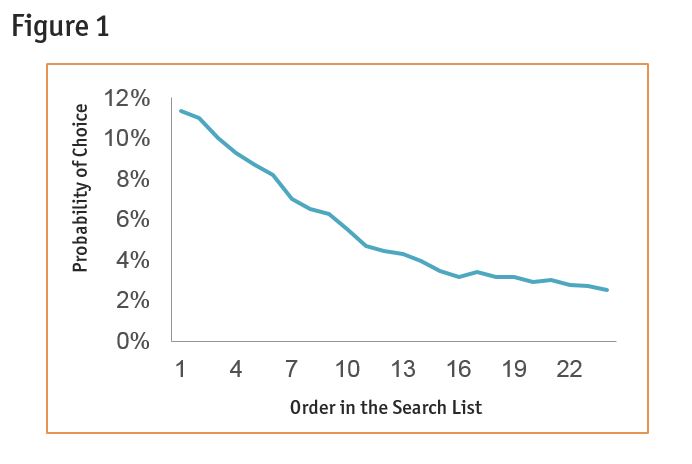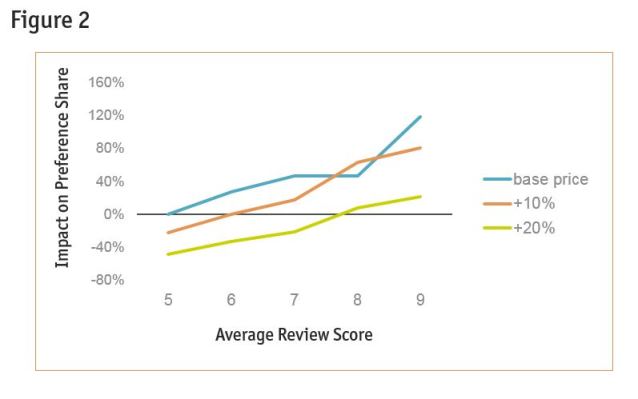Editor’s note: Mini Kalivianakis is director of client solutions at research firm SKIM Europe, Rotterdam.
Marketers working in traditional retail have decades of proven insight to fall back on. But today, sales are increasingly migrating to online retail environments that are less mature and are more technically-driven and these environments are seldom designed to effectively lead the customer through the purchase decision journey in a satisfying way. Knowing that time is extremely limited in the real world of e-commerce, the sales process offers very little room for error. It must be short, sweet and effectively optimized for the digital shelf. But what does an optimized online environment look like?
The newness of the online shopping world means that marketers and researchers have little in the way of established best practices to fall back on. In order to understand and optimize for online consumer decision behavior, our team performed an analysis of choice behavior in online sales channels using virtual online shopping environments that mimic Web sites and mobile apps such Amazon.com and the Amazon mobile app.
Simulations allow marketing researchers to test attributes such as product ranking, rating scores, imagery, product description and price. The results of this study revealed valuable techniques for optimizing e-tail environments, thereby making the online shopping experience most effective for shoppers and brands. Best practices that were found include boosting search positioning (particularly for mobile); understanding how sorting and online reviews can alter the competitive environment; and optimizing visuals and claims for the virtual shelf.
The omnichannel decision journey
Consumers have different reasons for shopping online vs. offline but both channels are key to understanding the comprehensive, modern-day decision journey. Consumers view online and offline channels as complementary paths, so both should be given equal importance.
Research shows that consumers shop offline when they have immediate needs, a desire to experience the product before purchasing it and when the process is deemed more convenient (e.g., they’re already inside or near the store). Alternatively, they shop online when they need to save time, wish to see a wider selection of products or when it is deemed more convenient.
On average, consumers consult four different sources before making a purchase. The most important source is online searches, followed by family and friends; product information at specialty retailers; and user-generated content, such as videos on YouTube and product reviews. That said, one-third of consumers make a decision on which brand and product to buy at their first touchpoint. This is the zero moment of truth (ZMOT) – a term introduced by Google in 2011 that refers to the investigation that is conducted by a consumer online about a product before taking action (i.e., searching for mobile reviews before making a purchase). The ZMOT means it’s vital that consumers find your product during their first exploration on the Internet.
The importance of search position
Google investigated the importance of search output in 2004 and in 2014 and found that in 2014 the topmost organic listing is still clicked on most often at 32.8 percent. However, organic listings lower on the list (especially in positions two to four) are clicked on more often in 2014 than in 2004. This shows that people are viewing more search result listings during a single search session. However, they are spending less time viewing each, scanning search results more quickly.
A higher search position means increased visibility of your brand and product, as well as greater consumer consideration for the product. As the ranking position in the search list decreases, the probability of that product being chosen also decreases. A drop in position from one to 10 leads to a decrease in probability of choice from 12 percent to 4 percent. It is important to ensure that your product or brand ranks at least among the top five to increase the probability of sale.

Being on top of search is even more important on a mobile device. People have a short attention span on mobile and mobile devices display a limited number of products at once. The nature of the smaller screen size reduces visibility.
Consumer behavior on a computer with a big screen and a mouse is different from consumers using a mobile device with touch-and-swipe. This becomes increasingly important as mobile retail traffic continues to exceed online retail traffic. Teams should plan how a product will appear on a desktop and on mobile.
Sorting changes the competitive environment
Consumer choices are always based on the competitive set. In many cases how the product compares to the competition is more important than how the product stands on its own merits. In an offline channel, the brand manager knows that the competitive set remains fairly proportional to the physical size of the retail store. However, in an online environment, the competitive set is potentially much larger and the direct competitive context changes according to the attributes that products are sorted by. Each time a consumer sorts or filters search results on a certain attribute, the system introduces a new competitive set to choose from, in a different order. This change to the competitive set could have an uplifting or detrimental effect, depending on the comparison.
Our virtual CPG shopper studies revealed that without sorting, products that rank first on the search list are chosen an average of 20 percent. After being sorted on price, the percentage chosen for the top-ranked product changes to 40 percent. Alternatively, after sorting on product ratings, the first-ranked product is chosen 30 percent of the time. This shows us that consumers are willing to accept the suggestions and recommendations provided by the channel, regardless of product.
Interestingly, once the user carries out an action (such as sorting or filtering), it’s immediately more likely that the user will make a decision based on that action. It’s important for brand managers to ensure that their products are positioned optimally – especially in the context of sorting – in order to be part of the consumer’s consideration set.
Products showing clear benefits have a higher probability of choice
Today, as consumers spend less time looking at each item – using mobile devices with fast vertical scrolling – it’s imperative for brands to be catchy enough to grab the consumer’s attention. Thankfully, there’s also more freedom to play with creative imagery online compared to brick and mortar stores.
For example, take a picture of a tub of ice cream. It doesn’t need to be shown as it’s viewed in the supermarket, sealed and packed. Instead, one can display an opened tub of ice cream, showing consumers what’s on the inside. Callouts like “new” can be used to capture the consumer’s attention. And claims, key features and calls to action that are normally used on-pack in a traditional store can now be displayed more prominently together with the product to entice the consumer to make the purchase.
Good reviews command a higher price
Price-comparison shopping engines are getting more and more popular as consumers want to know where they can buy a particular item for the lowest price. This can give producers and retailers the opportunity to attract new consumers and to go head-to-head against the competition. However, one has to be careful to not end up in a price battle. The best way to avoid this is by getting high rating scores for your products. Researchers found that as the rating scores of the product increase, the brand is able to charge an increasingly higher price for the product while maintaining market share. In fact, reviews were the strongest driver of higher pricing power for products.

The exact percentage by which prices can be increased differs between categories but researchers found that with a one-point increase on the ratings score of a product, the brand was able to raise prices by about 5 to 10 percent. This finding is important because brand managers might not have control over the design of the online retail store or the sorting criteria. However, they are able to influence the review or ratings of their products by ensuring that they establish and maintain a good connection with their consumers.
Ultimately, it’s important that all channels work together to make the consumer journey positive for both the brand and the shopper. Marketers often work independently for different channels and lack the benefits found in collaboration. By working together, they can create an omnichannel experience that leads to more sales.
